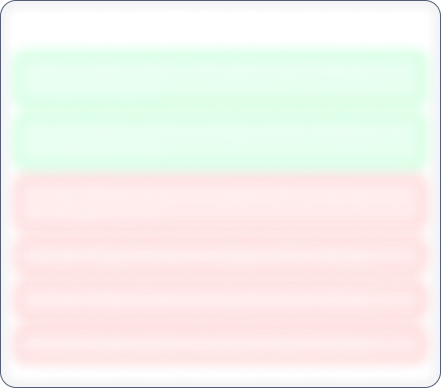Get 50% OFF This Monsoon!
Acrow India

No Data Available
Investor Sentiment
Acrow India Share price and Fundamental Analysis
Key Metrics
Included In
Stock Returns
Stock Heatmap

No Stocks
Smart Score

Unlock Smart Score
See Detailed Analysis & Insights


Unlock Insights
See Detailed Analysis & Insights
Technicals
Returns Calculator
If you would have investedResearch Report
No Research Report
Corporate Action
Financials
Key Ratios
ROE
Avg ROE (3 Yrs) : NaN%
ROCE
Avg ROCE (3 Yrs) : NaN%
ROA
Avg ROA (3 Yrs) : NaN%
NPM
Avg NPM (3 Yrs) : NaN%
Dividend History
5 Year FactSheet
Documents

No Data Available
News
Acrow India Management and History
Company Management


Unlock Management Data
See Detailed Analysis & Insights
Company History
Incorporated in 1960 as a joint venture between Hindustan Construction Company of the Walchand group and Acrow (Engineers), UK, Acrow India Ltd is promoted by Gopal Agrawal, Sanjay Goyal and Shyam Agrawal. It was engaged in the manufacture and marketing of modern systems of Acrow steel form work, scaffolding and allied equipment for the construction industry.
The company was fully Indianan following the decision of its collaborator to pull out of the equity participation. Apart from construction formwork, the company has also developed the design for the manufacture of modern industrial storage systems.
The company had entered into technical collaboration agreement for seven years duration in the year 1995, with M/s Bud-Pak Pty Ltd, Australia for the manufacture of Automatic bag packaging/bagging and Weighing machinery and associated equipment with latest technology.
Company had shifted the entire Aurangabad operations to Ravalgaon in Nasik District & new plant of Ravalgaon became operational since July -1998. Company took decision to acquire the Industrial Machinery Division (IMD) of The Ravalgaon Sugar Farm Ltd., situated at Ravalgaon as a going concern w.e.f 1st April, 1998.
In December, 2022, the Company was taken over by Agrawal Brothers (together holding 54.61%). The Agrawal Brothers have decades of experience and expertise and are engaged in the business of manufacturing of cotton yarns, processing and trading of cotton and real estate development.
Acrow India Share Price
Acrow India share price reflects investor sentiment toward the company and is impacted by various factors such as financial performance, market trends, and economic conditions. Share price is an indicator which shows the current value of the company's shares at which buyers or sellers can transact.
Acrow India Market Cap
Market capitalization of Acrow India indicates the total value of its outstanding shares. Marketcap is calculated by multiplying share price and outstanding shares of the company. It is a helpful metric for assessing the company's size and market Valuation. It also helps investors understand how Acrow India is valued compared to its competitors.
Acrow India PE Ratio
Acrow India PE ratio helps investors understand what is the market value of each stock compared to Acrow India 's earnings. A PE ratio higher than the average industry PE could indicate an overvaluation of the stock, whereas a lower PE compared to the average industry PE could indicate an undervaluation.
Acrow India PEG Ratio
The PEG ratio of Acrow India evaluates its PE ratio in relation to its growth rate. A PEG ratio of 1 indicates a fair value, a PEG ratio of less than 1 indicates undervaluation, and a PEG ratio of more than 1 indicates overvaluation.
Acrow India ROE (Return on Equity)
Return on Equity (ROE) measures how effectively Acrow India generates profit from shareholders' equity. A higher ROE of more than 20% indicates better financial performance in terms of profitability.
Acrow India ROCE (Return on Capital Employed)
Return on Capital Employed (ROCE) evaluates the profitability of Acrow India in relation to its capital employed. In simple terms, ROCE provides insight to investors as to how well the company is utilizing the capital deployed. A high ROCE of more than 20% shows that the business is making profitable use of its capital.
Acrow India Total Debt
Total debt of Acrow India shows how much the company owes to either banks or individual creditors. In simple terms, this is the amount the company has to repay. Total debt can be a very useful metric to show the financial health of the company. Total debt more than equity is considered to be a bad sign.
Acrow India Debt to Equity Ratio
The Debt-to-Equity (DE) ratio of Acrow India compares its total debt to shareholders' equity. A higher Debt to Equity ratio could indicate higher financial risk, while a lower ratio suggests that the company is managing its debt efficiently.
Acrow India CAGR (Compound Annual Growth Rate)
CAGR shows the consistent growth rate of Acrow India over a specific period, whether it is over a month, a year, or 10 years. It is a key metric to evaluate the company’s long-term growth potential. Main metrics for which CAGR is calculated are net sales, net profit, operating profit, and stock returns.
Acrow India Technical Analysis
Technical analysis of Acrow India helps investors get an insight into when they can enter or exit the stock. Key components of Acrow India Technical Analysis include:
Support Levels (S1, S2, S3)
There are usually multiple support levels, but the main support levels for a stock are S1, S2, S3. Support levels indicate price points where stock might get support from buyers, helping the stock stop falling and rise.
Resistance Levels (R1, R2, R3)
There are usually multiple resistance levels, but the main resistance levels for a stock are R1, R2, R3. Resistance levels represent price points where Acrow India shares often struggle to rise above due to selling pressure.
Acrow India Dividends
Dividends refer to the portion of the company’s profits distributed to its shareholders. Dividends are typically paid out in cash and reflect Acrow India ’s financial health and profitability.
Acrow India Bonus Shares
Bonus shares are usually given by companies to make the stock more affordable, increase liquidity, boost investor confidence, and more.
Acrow India Stock Split
Stock split increases the number of its outstanding shares by dividing each existing share into multiple shares. When the company offers a stock split, the face value of the stock reduces in the same proportion as the split ratio.
Acrow India Financials
The financials of Acrow India provide a complete view to investors about its net sales, net profit, operating profits, expenses, and overall financial health. Investors can analyze financial data to assess the company’s stability and also understand how the company has been growing financially.
Acrow India Profit and Loss Statements
The profit and loss statement of Acrow India highlights its net sales, net profit, total expenditure, and operating profits in the current financial year. This Profit and Loss statement is crucial for evaluating the profitability and financial stability of Acrow India .
Acrow India Balance Sheet
The balance sheet presents a snapshot of Acrow India ’s assets, liabilities, and equity of shareholders, providing insights into the financials of the company.
Acrow India Cashflow Statements
Cashflow statements track the company's cash inflows and outflows over a period. It is an essential tool for understanding how well the company manages its liquidity and finances.


